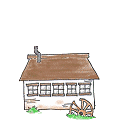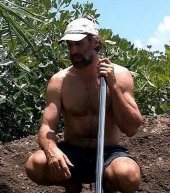posted 6 years ago
Wow, that's a lot, Dale! I'm glad to hear that she is willing to trust and able to have a good life today.
--
A thought occurs to me, that one of the benefits of the "drL" (consciousness amplification instrument) I've been posting about is that it creates a mini-culture in which allowing space for trauma to be processed is the norm. You can pick up the "trophy" anytime you are triggered for any reason; the trophy is the highest-priority tool, then the bell, then the voice, so the body gets to speak and be heard as top priority.
The instrument is used by small groups of 4-20 people. The idea is that everyone on the planet one day can have their own cluster of 4-20 people with whom they feel safe and with whom they strengthen their sense of safety and resilience so as to be able to coexist with people outside their cluster. (There's no bar to entry into a cluster, financial or health-wise or mental-health-wise or in terms of ability to communicate, religious or political views, etc.)
When any of the players of the instrument picks up the trophy, whoever has the "voice " (the ball of strands) at that moment stops and asks, Who would you like to be your trusted voice? and the player holding the trophy picks the person in the group they feel safest with. This person then gets the voice (ball of strands) and asks the holder of the trophy, "What is your breathing feeling like?," 'What are you feeling?", and echoes back if needed what the person says or vents; then, "What are you sensing in your body?" and rotates through these three questions until the trophy-holder is ready to return to focus on the group as a whole. The trophy-holder can also make a request of the group for support or for changed behavior.
They set the trophy down when they're done, and so they show with their action that they're done, rather than only with words. (Sometimes I've held the trophy, and I thought I was done and my hand just didn't let go.)
I think this is an important next step beyond therapies or practices like Somatic Experiencing or body-centered therapy or any kind of class learning for handling trauma. It is helpful to be able to go to a specialist and have space and time to process a specific traumatic event and allow the body to move through it. However, the next step is _integration_ of healing and healthy thinking into our society in general. "When the Great Dao is abandoned. . .loyal ministers appear" speaks to this. Ideally we shouldn't need healers at all, we should all be predominantly healthy. And having a small group of people (4-20) that is taking responsibility for health and handling the body's communications is a great start toward this integration. Getting to process the trauma right there and then when it comes up, and with the full support of the whole group, the whole mini-society, is a profound thing. It carries the message to the individual moving through their trauma that they matter, that how they feel matters, no less than the agenda.
Community Building 2.0: ask me about drL, the rotational-mob-grazing format for human interactions.

 4
4




 6
6





 2
2




 3
3




 3
3








 1
1

















